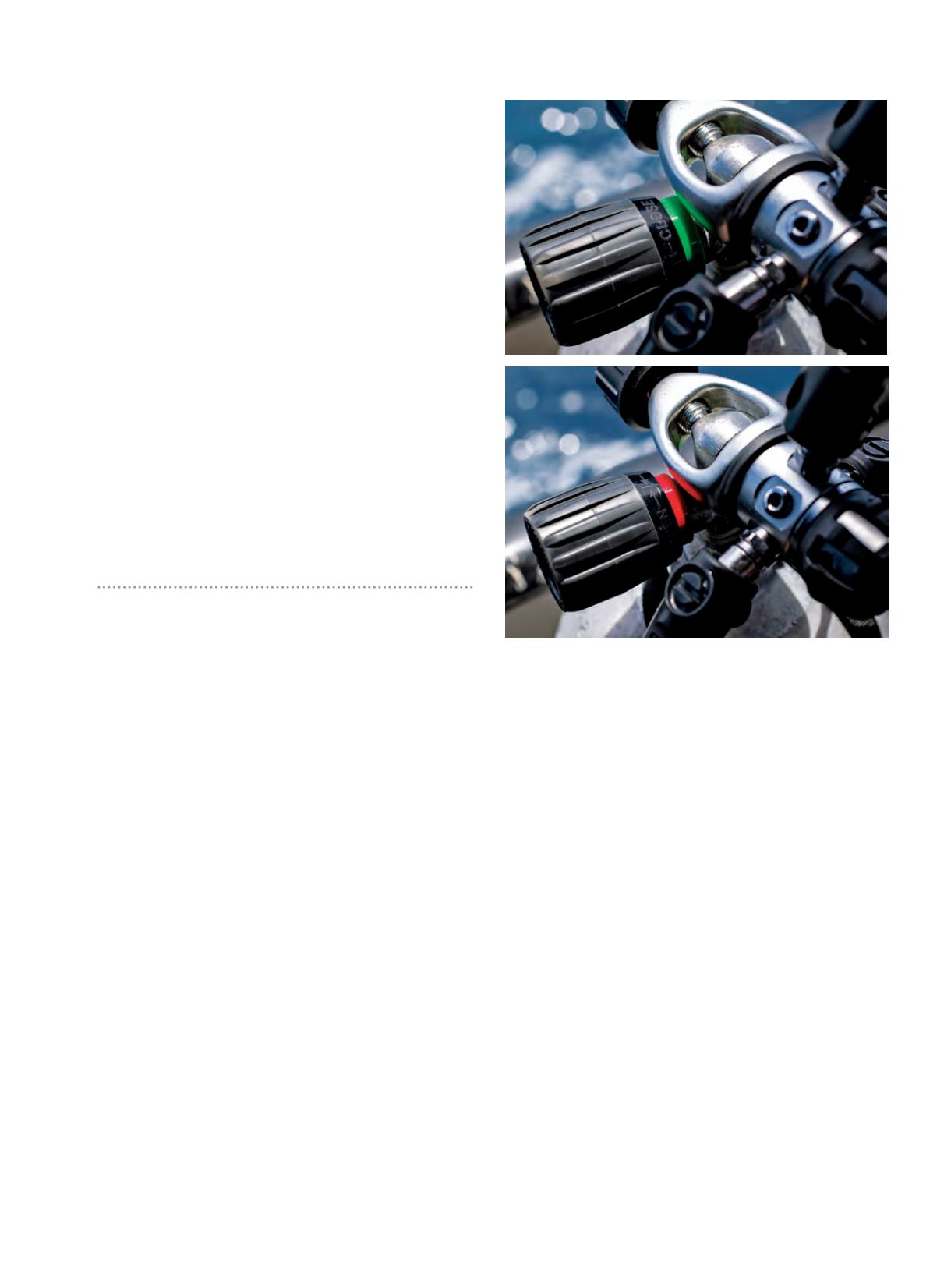
off completely. The root cause of this incident may
have been the often-suggested practice of opening a
valve all the way and then turning it back a half turn.
To learn about the prevalence of this practice and the
rationale behind it, we conducted an informal survey,
using Facebook, of a group of diver medics. The survey
questions were:
1. How do you open your tank valve?
2. Why are there so many incidents involving
incompletely open tank valves?
We received 40 responses. In general there were two
distinctive answers to the first question: “all the way”
and “all the way and then a half-turn (or quarter-turn)
back.” Nearly every respondent had his own justification
for doing it the way he did it. The second question
elicited long and various answers.
We contacted two experts, both experienced divers
and scholars in matters of diving accidents, and asked
them for insight.
How might an incompletely opened valve leave a
diver without a gas supply?
Peter Buzzacott:
The breathing gas is delivered from
the tank to the diver through a valve, then a first-
stage regulator, then a hose and then a second-stage
regulator. The degree to which the valve is open can
be important (depending on the valve type), and it may
vary among individual valves of the same type. Even
valves of the same brand vary in the number of degrees
the knob has to be turned before the volume of gas
meets or exceeds the diver’s needs.
A gauge is connected to the tank immediately after
the valve to measure pressure in the tank. Next in the
gas line is the first-stage regulator, which fills the hose to
about 130 psi higher than ambient pressure. Last is the
second stage. When a diver inhales, the pressure in the
breathing line drops, and the regulators let more gas flow
out of the tank. If the tank valve is not fully open, then a
diver will suck the available gas out of the line faster than
the gas flows out of the tank. In that case one can see the
needle of the gauge move with each attempted breath.
Recreational divers’ average breathing rate over
the duration of a dive varies from 7 to 45 liters per
minute. This depends on how big the diver is, how
stressed he is and also how hard he is exercising. For
ventilation of 45 liters per minute, a diver may breathe
at rate of 30 times per minute, giving him one second
for inhalation and one second for exhalation of a tidal
volume of 1.5 liters. This means that a regulator has to
deliver 1.5 liters in one second.
However, the deeper a diver is, the more molecules of
gas are necessary to make up the same volume and the
more molecules must pass through the valve and the
rest of the gas line into the lungs. Remember, pressure
at the surface is one atmosphere, and it increases by
another atmosphere for every 33 feet of depth. If a
diver is breathing 20 liters per minute at the surface,
then he will need 40 normal liters of gas at 33 feet
(compressed down to 20 liters) and 60 normal liters of
gas (compressed down to 20 liters) at 66 feet. A partly
closed valve may provide sufficient gas to a resting
diver at the surface, but at depth or during exercise
the supply will not meet the demand. At this point
there is often a moment of disbelief whereupon the
diver asks himself, “Did I just run out of gas?” He may
take another breath and initially think, “OK, phew, no
problem,” but then it stops short again. If this happens
to you, what are your options?
First, and most important, signal your buddy that
something is wrong (remember, the twisting hand
signal), and then tap your regulator. This happened
to a buddy of mine at 66 feet on an artificial reef in
the Indian Ocean. I gave the diver in need my spare
|
51
Some tank valves, though not many, feature a system for indicating
whether the valve is open or closed.
STEPHEN FRINK
STEPHEN FRINK


